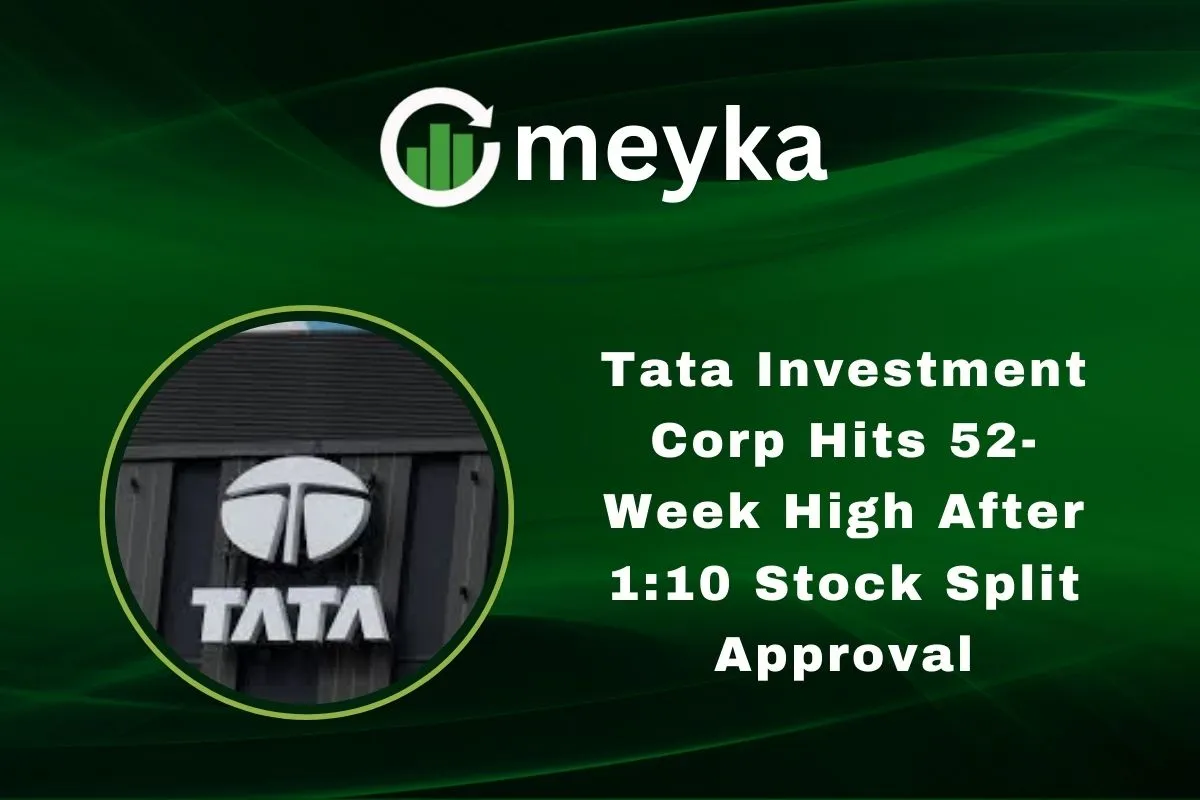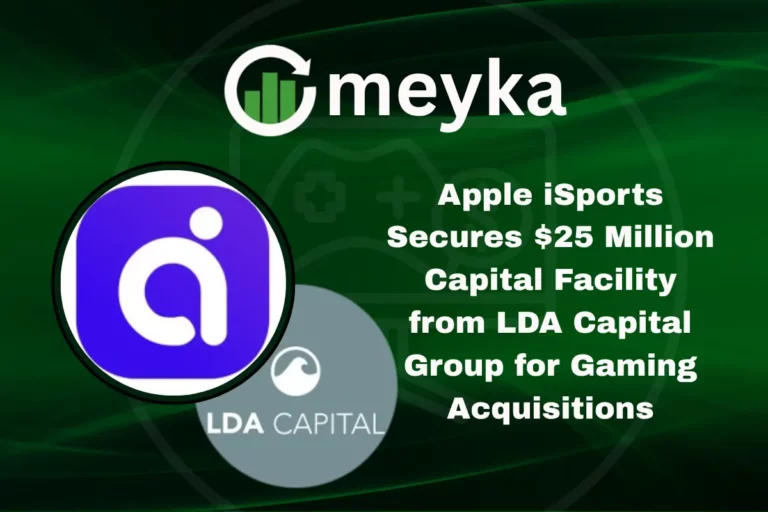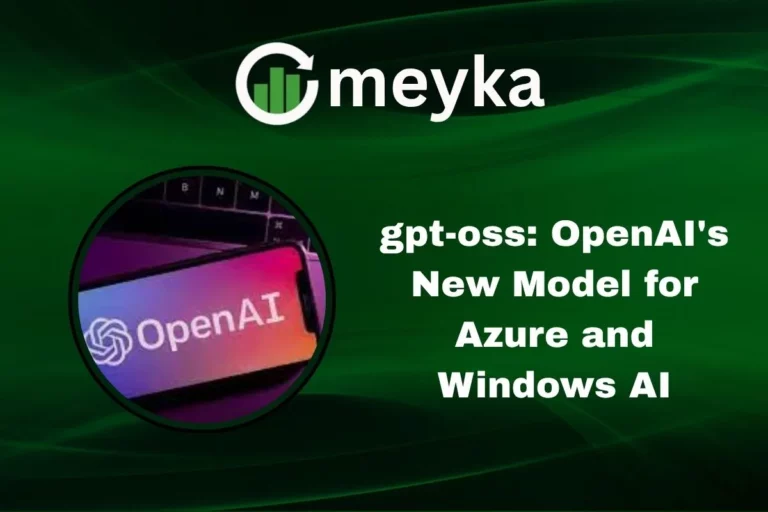Tata Investment Corp Hits 52-Week High After 1:10 Stock Split Approval
Tata Investment Corporation (TICL) stock suddenly shot up to a new 52-week high after its board approved a 1:10 stock split. On September 23, 2025, the shares rose about 11.7 % intraday to reach ₹8,131.50 on the BSE. This surprise move has excited many investors. We see this as a signal that the company wants to widen its reach and improve liquidity.
A stock split itself doesn’t change the total value of what we own. But it can make each share more affordable. That opens doors for more participation by smaller investors. Let’s look deeper at Tata Investment’s background, the split, the market reaction, and what lies ahead.
Understanding Tata Investment Corporation
Tata Investment Corporation Limited is one of India’s long-standing investment companies. It was founded in 1937 and is a part of the Tata Group. Unlike a company making products, TICL invests in shares, debt securities, and other long-term holdings. Its portfolio spans many sectors: banking, infrastructure, technology, FMCG, and more.
Because of this structure, its success depends on how well its underlying investments perform. If those do well, TICL’s net asset value (NAV) improves, and that lifts the stock.
What Is a Stock Split?
A stock split is simply dividing each existing share into multiple shares. The total value of all shares stays the same.
For example, a 1:10 stock split means one share becomes ten shares. If you had 100 shares before, you’ll have 1,000 after. But your total holding value remains equal (assuming no market reactions).
The main purpose? Boost liquidity, make the stock more affordable, and increase retail interest. Also, it often signals confidence from management. It is not the same as a bonus issue, where extra shares are given as a reward without changing face value.
Details of Tata Investment’s 1:10 Stock Split
This is the first ever stock split announced by Tata Investment. In the split, each share with face value ₹10 will be divided into 10 shares of face value ₹1. The board has fixed October 14, 2025 as the record date. Shareholders listed on that date will be eligible for the new shares.
Authorized share capital changes too:
- From 6 crore shares (₹10 each) to 60 crore shares (₹1 each)
- Issued and subscribed share capital will expand similarly (from ~5.05 crore to ~50.6 crore shares)
Importantly, shareholders don’t lose or gain value directly from the split. The change is in number and face value.
Stock Market Reaction
The market responded almost immediately. On September 23, the share price jumped ~11.7 % to touch ₹8,131.50 intraday. In two trading sessions, it rallied ~24.5 %. Compared to its 52-week low of ₹5,147.15 in February 2025, the stock has risen ~77 % in this run.
Trading volume also spiked. On the BSE and NSE combined, about 2.69 million shares (≈ 5.3 % of equity) changed hands. This heavy volume shows strong interest.
Such a reaction suggests many investors believe the split will help improve liquidity and attract new investors.
Impact on Shareholders
Existing shareholders get more shares automatically. If you own 100 shares, after this split you’ll own 1,000. Your ownership percentage remains the same. No value is lost or gained purely from the split.
Retail investors benefit. With a lower per-share price (since face value drops to ₹1), it becomes easier for small investors to buy in.
Liquidity improves, because more tradable units exist. The stock may respond with tighter bid-ask spreads and higher turnover.
In terms of dividends or valuation metrics, the split doesn’t change what a company earns. But per-share metrics get adjusted. For instance, earnings per share (EPS) will be lower (divided by 10), and book value per share also changes.
Broader Market Context
Stock splits have become increasingly popular in India recently, especially among large-cap firms eager to widen retail participation. Within Tata Group itself, this step is historic. Tata Investment is the first Tata entity to announce a stock split.
In the broader market, splits often send positive signals. Many investors interpret a split as management saying: “We believe in our future growth and want more people to own us.”
Financial Performance of Tata Investment Corp
Let’s check whether the fundamentals back the bullish sentiment.
- The stock’s financial metrics show a P/E ratio of ~125.8× and a Price/Book (P/B) of ~1.32×.
The 52-week high/low is ₹ 9,099.50 / ₹ 5,145.15. - The company’s book value per share is around ₹ 6,144.99 .
- In recent years, its stock has delivered multi-bagger returns. Over the past five years, it has gained more than 1,000 %
These numbers suggest that the stock was already strong before the split news. The stock split is likely an accelerator, not the sole driver.
Future Outlook
We expect several possible trends going forward:
- Greater retail participation: The lower per-share price could draw new investors who were previously priced out.
- Improved liquidity: More shares in the market may lead to better trading activity.
- Short-term volatility: After the split, price may swing as the market digests the change.
- Steady fundamentals matter: The real long-term gains still depend on how well TICL’s investments perform.
- Risk factors: The portfolio is exposed to market cycles. If equity markets turn weak, TICL will feel the impact.
If management continues to pick quality assets, the stock split may help realize latent investor value.
Conclusion
Tata Investment Corporation’s move to split shares 1:10 has shaken up investor interest. The stock’s rally to a 52-week high reflects confidence in this strategic step. But the split is not magic. It’s a structure change to make ownership easier and trading smoother. The true test lies in execution and the performance of the underlying investments.
For investors, this is a chance to reassess. If you believe in Tata Investment’s portfolio and discipline, this new chapter may offer rewarding opportunities.
FAQS:
Buying before or after depends on price and goals. Before, shares cost more. After, shares are cheaper, but value is the same. Timing matters.
A split alone does not raise value. It just makes shares cheaper. But more people may buy, and demand can push the price up.
Tata Investment share is rising because of strong Tata Group growth, high returns, and news of a stock split that attracts new investors.
Disclaimer:
This content is for informational purposes only and is not financial advice. Always conduct your research.






